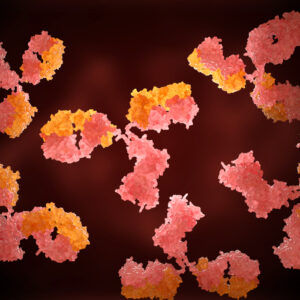Human Immunodeficiency Virus
Human Immunodeficiency Virus (HIV) continues to be a major global public health issue, having claimed more than 35 million lives as of 2018. In 2017, 940 000 people died from HIV-related causes globally. There were approximately 36.9 million people living with HIV by the end of 2017, with 1.8 million people becoming newly infected in 2017 globally (WHO).
To support continuing research into HIV, The Native Antigen Company have developed a panel of recombinant proteins and antibodies for different strains of HIV.
HIV Background
The Native Antigen Company offers untagged HIV-1 glycoprotein gp140 group M subtypes A, B, C, CRF01-AE, group O, and HIV-2 glycoprotein gp140, enabling a new generation of diagnostic assays and structural studies.
The viral entry receptor for HIV-1 and HIV-2 is the Envelope protein gp160, a transmembrane glycoprotein featuring the mature glycoprotein gp120 and the transmembrane protein gp41. Both neutralising and non-neutralising patient antibodies are targeted against gp160, making this protein an exciting diagnostic and vaccine target. gp160 is synthesised as a polyprotein and cleaved by the host-resident protease furin (Checkley et al., 2011). Removal of the intravirion and transmembrane domains allows for production of a soluble secreted version of gp160 termed gp140.
Read more about advantages of our novel HIV antigens portfolio in the blog: New Tools for HIV Diagnosis
References
Checkley, M.A., Luttge, B.G. and Freed, E.O. (2011) ‘HIV-1 envelope glycoprotein biosynthesis, trafficking, and incorporation’, Journal of Molecular Biology, 410(4), pp. 582–608. doi:10.1016/j.jmb.2011.04.042.
HIV Antigens
The Native Antigen Company offers a panel of recombinant HIV gp120 proteins, expressed in our mammalian cell system to ensure correct folding and glycosylation. Our HIV antigens are available from different HIV-1 sub-types, allowing researchers to study the differing behaviours of the sub-types and associated activity of a range of proteins.
HIV Antibodies
The Native Antigen Company offers a selection of HIV antibodies allowing you to pursue a broad range of R&D activities, including assay development and vaccine research.
Check out our Blog!
New Tools for HIV Diagnosis: Enabling a new generation of Human Immunodeficiency Virus 1 (HIV-1) and HIV-2 diagnostic assays and structural studies
Questions?
Check out our FAQ section for answers to the most frequently asked questions about our website and company.

![Human Immunodeficiency Virus GP120 Protein [HIV-1/Clade B (89BZ_167)]](https://thenativeantigencompany.com/wp-content/uploads/1970/01/Misc-Virus-33-M-1-300x300.jpg)
![Human Immunodeficiency Virus P24 Protein [HIV-1/Clade B]](https://thenativeantigencompany.com/wp-content/uploads/2020/01/Misc-Virus-168-300x300.jpg)



